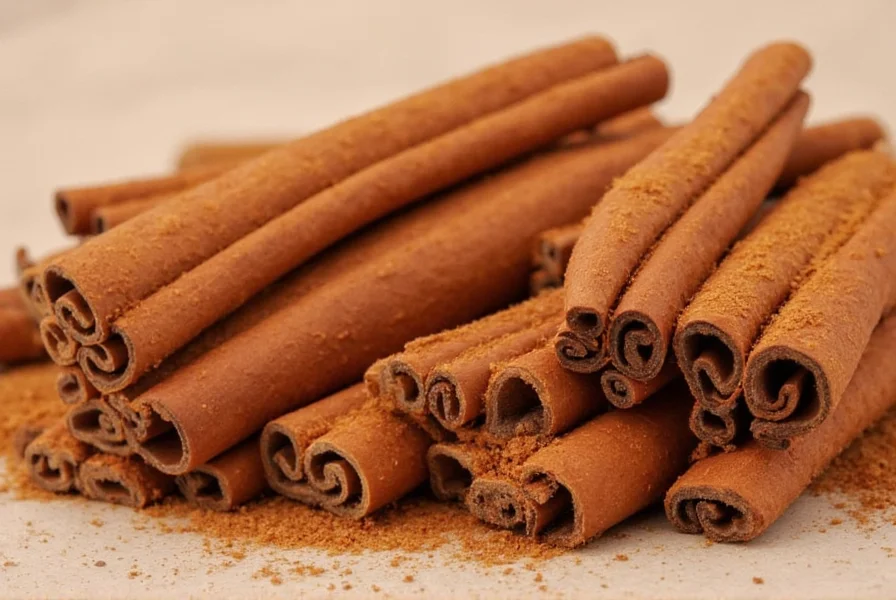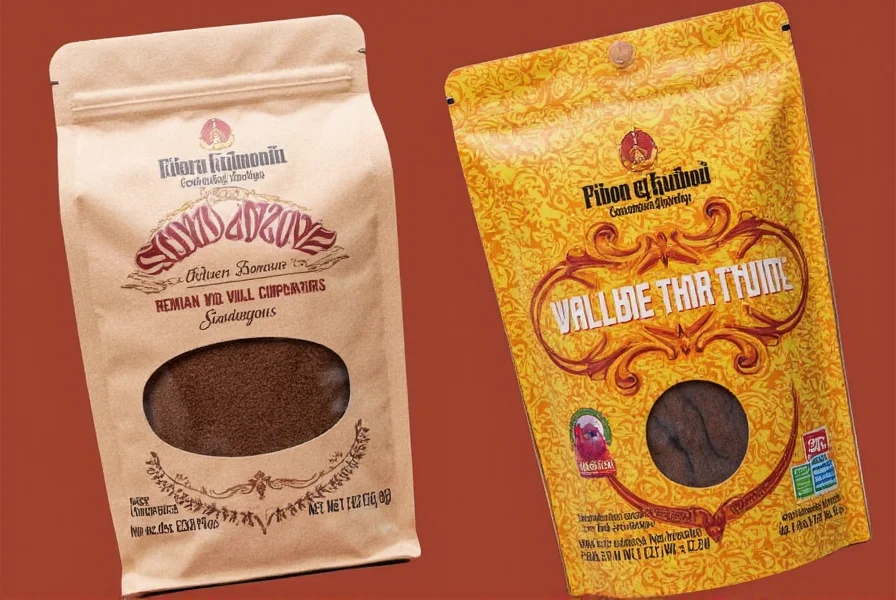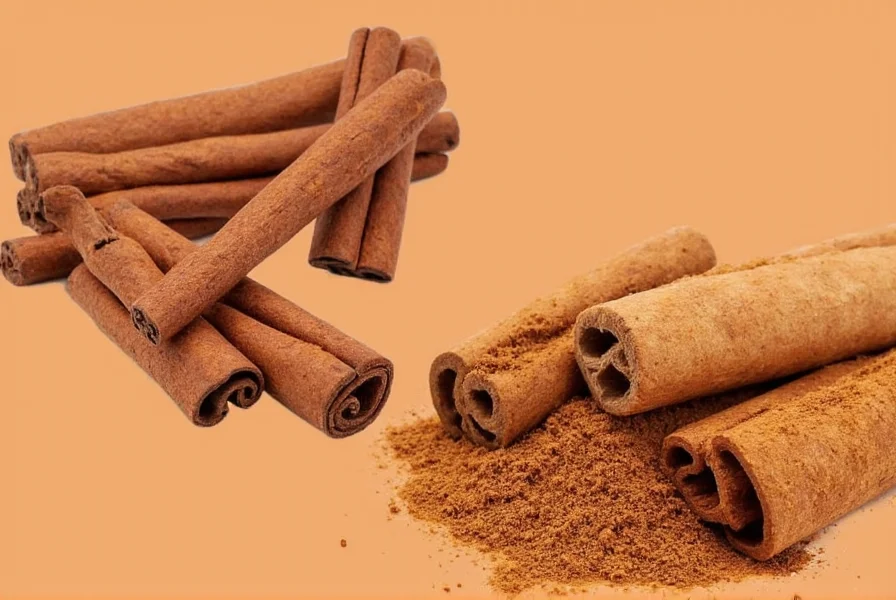Cinnamon comes in four primary types: Ceylon, Cassia (including Chinese and Saigon varieties), and Indonesian Korintje. Each has distinct flavor profiles, health implications, and culinary uses. This guide provides a detailed comparison to help you choose the right cinnamon for your cooking needs.
Table of Contents
- Cinnamon 101: What Is Cinnamon Anyway?
- The Major Types of Cinnamon Around the World
- Side-by-Side Comparison: The Cinnamon Contenders
- How to Use Each Cinnamon Type in Cooking
- Buying Guide: Choosing the Right Cinnamon for You
- Frequently Asked Questions About Cinnamon Types
- Fun Facts & Flavor Tips
- Conclusion: Crown Your Cinnamon Champion
Cinnamon 101: What Is Cinnamon Anyway?
Cinnamon comes from the inner bark of trees belonging to the Cinnamomum genus. While technically divided into two main species (Ceylon and Cassia), the market commonly categorizes them into four types based on origin and characteristics: Ceylon, Chinese Cassia, Saigon (Vietnamese Cassia), and Indonesian Korintje. When dried, it forms the familiar quills or rolls found on spice shelves everywhere.
The Major Types of Cinnamon Around the World
Let's meet the contenders:
- Ceylon Cinnamon – The "true" cinnamon from Sri Lanka (Cinnamomum verum)
- Chinese Cassia – The most common commercial variety from China
- Saigon Cinnamon – A high-oil variety of Cassia from Vietnam
- Indonesian Cinnamon (Korintje) – A milder Cassia variety from Indonesia

| Type | Origin | Flavor Profile | Texture / Appearance | Coumarin Content | Common Uses | Price Range |
|---|---|---|---|---|---|---|
| Ceylon | Sri Lanka | Mild, sweet, citrusy, floral | Thin, layered bark; tan to light brown | Very low (0.017-0.094 g/kg) | Baking, desserts, tea blends | High |
| Chinese Cassia | China | Strong, spicy, earthy | Thick, hard quills; reddish-brown | High (0.26-1.8 g/kg) | Stews, savory dishes, mulled drinks | Low to moderate |
| Saigon | Vietnam | Intense, sweet-spicy, high oil content | Thicker than Cassia; dark reddish | Very high (up to 6.97 g/kg) | Baking, spiced coffee, cocktails | Moderate to high |
| Korintje | Indonesia | Smooth, warm, mild sweetness | Medium thickness; light red-brown | Moderate (0.1-1.0 g/kg) | Commercial baking, cinnamon rolls | Moderate |
How to Use Each Cinnamon Type in Cooking
Ceylon Cinnamon: The Gourmet's Choice
Ceylon is delicate enough for desserts like custards, poached fruits, and creamy rice puddings. It pairs beautifully with honey, orange zest, and cardamom.
- Use in place of vanilla in ice creams
- Add to chai tea for a smoother profile
- Grind finely and dust over fresh fruit

Chinese Cassia Cinnamon: The Everyday Hero
This is what most Americans know as "cinnamon." Its bold flavor stands up well in baked goods, stews, and spiced beverages.
- Perfect for cinnamon rolls and apple pies
- Add to chili or mole sauces for depth
- Used in mulled wine and cider
Saigon Cinnamon: The Bold Firecracker
With twice the essential oils of other varieties, Saigon brings heat and intensity. Best when you want that punchy cinnamon flavor to shine.
- Ideal for snickerdoodles and spiced cakes
- Infuse into spirits for homemade cinnamon liqueur
- Mix into hot chocolate for a fiery twist
Indonesian (Korintje): The Baker's Staple
A versatile option for daily use in commercial kitchens or cozy home bakes. Mild but consistent, with just the right amount of warmth.
- Great for mass-produced cinnamon toast
- Excellent in oatmeal and granola
- Perfect for blending into spice mixes
Buying Guide: Choosing the Right Cinnamon for You
Picking the best cinnamon depends on your budget, intended use, and how adventurous you are in the kitchen. Here's a quick breakdown of each type's strengths:
Top Picks for Different Scenarios
- Best for Baking: Ceylon or Saigon – both offer complexity and richness.
- Best Budget Buy: Indonesian Korintje – great value and consistency.
- Best for Savory Dishes: Chinese Cassia – holds up to long cooking times and strong spices.
- Most Unique Flavor: Saigon – super aromatic and robust.
- Health-Conscious Option: Ceylon – lowest coumarin levels for safe regular consumption.
What Form Should You Buy?
- Whole Sticks: Ideal for infusing liquids like syrups, teas, and soups. Reusable!
- Ground Cinnamon: More convenient for baking and everyday cooking.
- Cinnamon Extract or Oil: For potent flavor in small doses, especially in desserts.
Storage Tips
To preserve flavor and aroma:
- Keep in an airtight container away from sunlight
- Store ground cinnamon separately from whole sticks
- Expect shelf life of up to 2 years for whole, 1 year for ground
Frequently Asked Questions About Cinnamon Types
What's the main difference between Ceylon and Cassia cinnamon?
The main difference lies in flavor profile, appearance, coumarin content, and botanical classification. Ceylon cinnamon (Cinnamomum verum) is milder, sweeter, and has multiple thin layers of bark, while Cassia (Cinnamomum cassia) is stronger, spicier, with a single thick, hard quill. Ceylon contains significantly less coumarin (0.017-0.094 g/kg) compared to Cassia varieties (0.1-6.97 g/kg), making it safer for regular consumption in larger quantities.
Which cinnamon type is healthiest?
Ceylon cinnamon is generally considered the healthiest option because it contains the lowest levels of coumarin—a compound that can be harmful to the liver in large quantities. Cassia varieties (including Chinese, Saigon, and Korintje) have significantly higher coumarin content, so if you consume cinnamon regularly or in large amounts, Ceylon is the better choice for liver safety.
Can I substitute one cinnamon type for another in recipes?
Yes, but with adjustments. Ceylon is milder, so you may need 1.5-2 times more than Cassia for similar flavor intensity. Saigon is stronger than Cassia, so use about 25% less. For best results, start with less than the recipe calls for, taste, and adjust. Some bakers even mix Ceylon and Cassia (1:1 ratio) for balanced flavor.
Why is Ceylon cinnamon more expensive than other types?
Ceylon cinnamon is more expensive due to its labor-intensive harvesting process (multiple thin layers must be carefully peeled), lower yield per tree, and more limited production (primarily Sri Lanka). The complex, delicate flavor profile and significantly lower coumarin content also contribute to its premium price point compared to the more readily available Cassia varieties.
How can I tell if my cinnamon is Ceylon or Cassia?
Visually: Ceylon has thin, papery layers that look like tightly rolled cigarillos, while Cassia has a single thick, hard quill. Ceylon is lighter tan/brown; Cassia is darker reddish-brown. When broken: Ceylon is brittle and shatters easily; Cassia is hard and splinters. Taste: Ceylon is sweeter and milder; Cassia is hotter and more intense. If buying ground, check the label or ask your supplier, as visual identification is impossible with powder.
Which cinnamon type should I use for cinnamon rolls?
For cinnamon rolls, many professional bakers prefer Indonesian Korintje for its consistent flavor and good value, though Saigon cinnamon provides the most intense, fiery flavor that stands out in the swirl. If you prefer a more complex, nuanced flavor, try using a 1:1 blend of Ceylon and Cassia. Avoid using pure Ceylon for cinnamon rolls as its delicate flavor may get lost in such a bold application.
How much cinnamon is safe to consume daily?
For Cassia varieties (Chinese, Saigon, Korintje), health authorities suggest limiting consumption to about 1 teaspoon (2.5 grams) per day due to coumarin content. Ceylon cinnamon contains significantly less coumarin, making it safer for regular consumption up to 1-2 tablespoons daily. People with liver conditions should be particularly cautious with Cassia and may want to stick exclusively with Ceylon.
Fun Facts & Flavor Tips
- Cinnamon has been used for thousands of years across ancient Egypt, China, and Rome – both for flavor and preservation.
- Cassia varieties contain higher levels of coumarin, which can be harmful to the liver in large quantities. If you eat a lot of cinnamon, go with Ceylon.
- Want a deeper flavor? Toast your cinnamon sticks before using them!
- Try mixing Ceylon and Cassia together in recipes for balanced flavor profiles.
- In Middle Eastern cuisine, cinnamon is often used in meat dishes like kofta and lamb stew.

Conclusion: Crown Your Cinnamon Champion
So, who takes the crown in the cinnamon showdown? That really depends on how you like to cook and what flavors excite you. Whether you're team Ceylon, a Cassia loyalist, or a fiery fan of Saigon, knowing the different cinnamon types empowers you to make smarter choices in the kitchen.
Don't be afraid to experiment! Swap out your usual cinnamon for a new type next time you bake or brew. Who knows — your new favorite flavor might be just a quill away.

Remember: There's no single 'best' cinnamon — there's only the right cinnamon for the moment.










 浙公网安备
33010002000092号
浙公网安备
33010002000092号 浙B2-20120091-4
浙B2-20120091-4